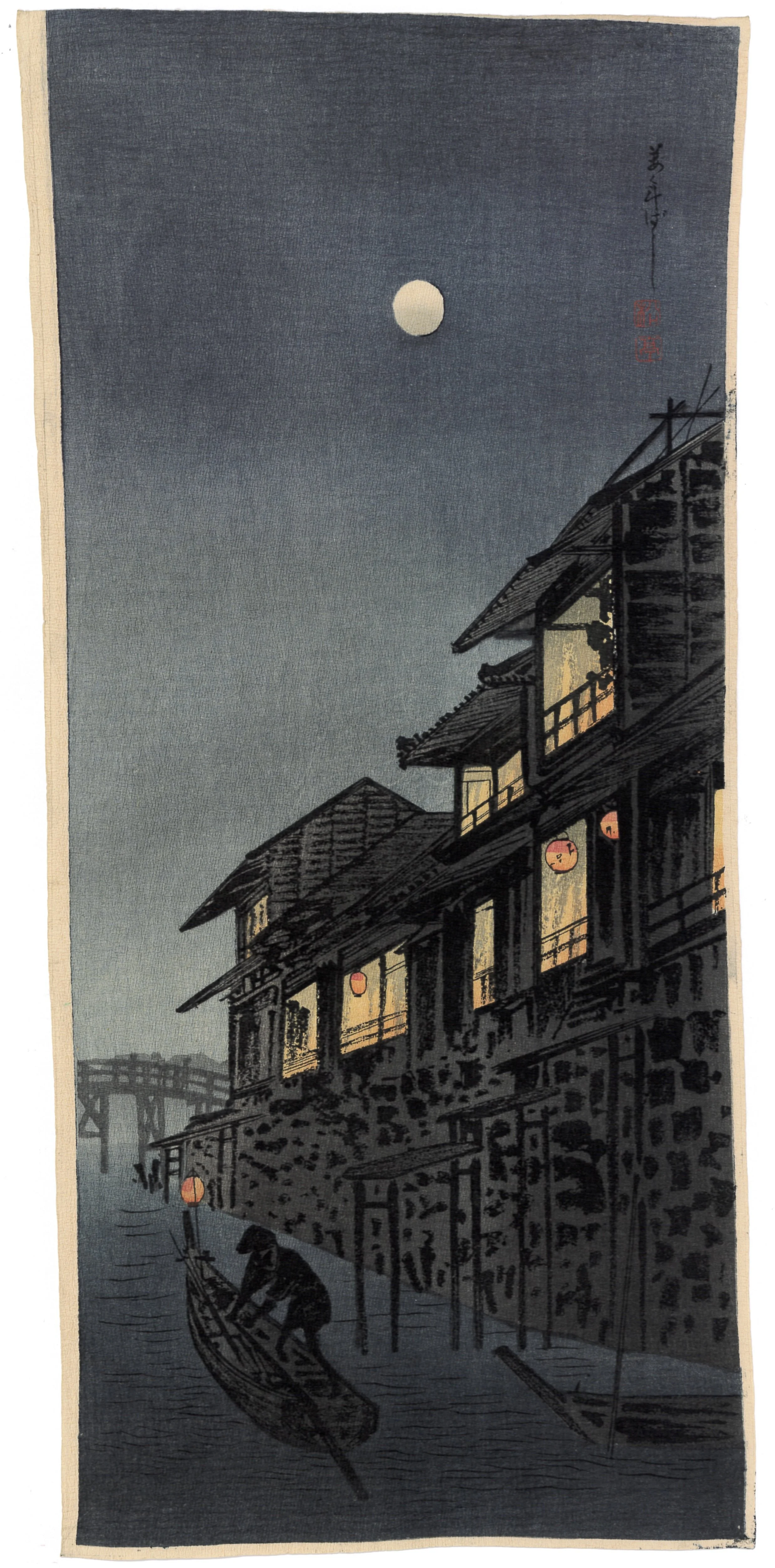Takahashi Shotei (1871–1945)
Takahashi Shotei may have once been the most well-known Japanese woodblock print artist in the world, even if the Westerners who flooded Japan in the early part of the 20th Century didn’t know his name.
Watanabe Shozaburo hired him to design shinsaku-hanga (souvenir prints) to fulfill tourists’ demand for Ukiyoe-style woodblock landscape prints similar to those created in the past by masters of that genre, especially Hiroshige. These prints sold extremely well to this new audience, and were often in unusual sizes, to striking effect. (We wonder what Hiroshige would have thought of them.)
Shotei eventually took the name Hiroaki and produced hundreds of designs, but the blocks were destroyed in the Great Kanto earthquake of 1923. This is when Watanabe assigned him the unusual task of recreating his own works. He lived until 1945.





